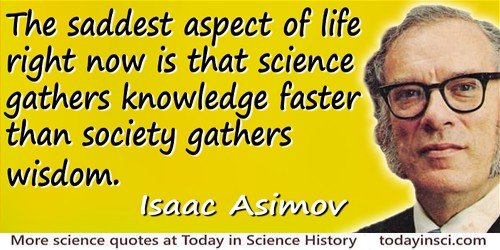When we hear the phrase “Saving Humanity Asimov,” it sparks thoughts of hope, creativity, and deep ethical questions. The works of Isaac Asimov, particularly his science fiction stories, offer not just entertainment but important lessons about humanity, technology, and the future. Asimov’s works have shaped how people think about robots, artificial intelligence, and the responsibilities we share as a global society. Let’s dive into the world of Asimov to understand why his lessons remain so important today.
What is “Saving Humanity Asimov” All About?
Isaac Asimov, one of the most celebrated science fiction writers of the 20th century, was a visionary. “Saving Humanity Asimov” refers to the central theme found in many of his works, where the survival of humanity is placed at the forefront of his stories. Asimov often explored how humans, robots, and technology can work together (or sometimes clash) in ensuring the future of mankind.
At the heart of this theme is Asimov’s ability to look far beyond his time and imagine a world where technology and ethics intertwine. His stories challenge us to think deeply about the impact of our choices today and how they shape our tomorrow. Whether it’s through the lens of robots, space exploration, or artificial intelligence, Asimov’s central question remains: How can we save humanity from itself?
How Isaac Asimov Imagined the Future
Isaac Asimov was not just a writer; he was a thinker ahead of his time. His works often painted a future where humans and machines worked side by side, but not without challenges. In his famous “Robot” series, Asimov presented a futuristic society where robots, governed by ethical rules, were created to serve humanity. His stories like I, Robot and The Last Question explored questions about humanity’s relationship with technology and how we can prevent technology from destroying us.
Asimov believed the future would be shaped by three key elements: human curiosity, scientific progress, and moral responsibility. He imagined a world where humans solved problems not through war or destruction but through cooperation, understanding, and the responsible use of technology. His vision wasn’t always optimistic, though. Some of his stories warned us about the potential dangers of unchecked technological growth, where humanity might lose control of its creations.
Can We Save Humanity Today?
The idea of saving humanity isn’t just a story for science fiction—it’s a real challenge we face today. From climate change to artificial intelligence, the world is confronting problems that require the kind of forward-thinking Asimov often wrote about.

Asimov’s lessons are particularly relevant in the 21st century, where technology has advanced faster than ever before. We now have AI systems capable of performing tasks humans once thought impossible, yet these systems also come with risks. Similarly, global issues like environmental degradation, pandemics, and social inequality demand cooperation on a massive scale.
Why Science Fiction Can Teach Us Real Lessons
Science fiction often acts as a mirror, reflecting our fears, hopes, and potential. Asimov used his stories to address real-world concerns by imagining them in futuristic settings. His works remind us that the challenges we face today, like ethical questions surrounding AI or climate change, aren’t new—they’ve been imagined and explored for decades.
Stories like Foundation and I, Robot teach us to think critically about progress. They show us that technology is neither good nor bad—it’s how we use it that matters. By studying Asimov’s vision of the future, we can learn to anticipate problems and think about solutions before they arise.
The Role of Robots in Saving Humanity
One of Asimov’s greatest contributions to science fiction was his depiction of robots. Unlike many of his contemporaries, who saw robots as a threat, Asimov viewed them as tools to help humanity thrive. His famous “Three Laws of Robotics” were designed to ensure that robots would always act in the best interest of humans.
Robots in Asimov’s stories weren’t just machines; they were ethical entities programmed to value human life above all else. Today, as robots and AI become a bigger part of our daily lives, Asimov’s ideas can guide us in designing systems that are safe, ethical, and beneficial for everyone.
What Makes Asimov’s Stories So Special?
What sets Asimov apart is his ability to combine complex scientific ideas with profound ethical questions. His stories don’t just entertain; they make you think. Whether it’s a robot struggling with moral dilemmas or a group of scientists working to preserve civilization, Asimov’s characters face challenges that feel real and relatable.
His writing also stands out because of its optimism. While some of his stories include warnings about potential dangers, they always leave room for hope. Asimov believed in humanity’s ability to overcome its flaws and build a better future.
Isaac Asimov’s Rules for Robots
Isaac Asimov’s “Three Laws of Robotics” are some of the most famous ideas in science fiction. These rules, first introduced in his short story Runaround in 1942, were designed to ensure that robots would never harm humans or act against their interests. The laws are:
- A robot may not harm a human being or, through inaction, allow a human being to come to harm.
- A robot must obey the orders given it by human beings, except where such orders would conflict with the First Law.
- A robot must protect its own existence as long as such protection does not conflict with the First or Second Laws.
These rules became the foundation of many of Asimov’s stories, sparking debates about ethics, responsibility, and the role of technology in our lives. Even today, they are referenced in discussions about AI ethics and the development of autonomous systems.
Lessons We Can Learn From Asimov’s Ideas
Asimov’s stories teach us many valuable lessons. One of the most important is the need for balance. Technology, while powerful, must always be guided by ethical considerations. Without this balance, the very tools we create to improve our lives could become the source of our destruction.
Another key lesson is the importance of cooperation. In Asimov’s Foundation series, the survival of humanity depends on the collaboration of individuals across different fields, from mathematics to psychology. This idea reminds us that saving humanity requires input from all of us, not just scientists or politicians.
Why Protecting Humanity is a Shared Responsibility
Isaac Asimov’s works emphasize that saving humanity is not the responsibility of one person or group—it’s something we all share. Whether it’s protecting the environment, building ethical AI, or working toward social justice, everyone has a role to play.

Thinking Like Asimov: Planning for the Future
Asimov was a master of thinking ahead. He believed that by anticipating future problems, we could avoid them. His stories challenge us to think about the long-term consequences of our actions, whether it’s how we use technology or how we treat the planet.
Science Fiction’s Role in Real Life
Science fiction isn’t just about spaceships and robots—it’s a tool for exploring real-world issues in a creative way. Asimov used his stories to ask big questions about humanity’s future and to propose ideas for solving problems. By reading and discussing science fiction, we can develop new ways of thinking about the challenges we face.
Why “Saving Humanity Asimov” Matters Today
In a world filled with uncertainty, Asimov’s stories remind us that hope and creativity are powerful tools. They inspire us to believe in a better future and to work toward it, no matter how difficult the challenges may seem.
How to Use Asimov’s Lessons in Real Life
Asimov’s lessons can be applied in many ways. For example, we can use his ideas to guide the ethical development of AI, ensuring that technology serves humanity rather than harming it. We can also apply his emphasis on cooperation by working together to solve global problems like climate change and inequality.
On a personal level, Asimov’s stories encourage us to think critically and creatively about the world around us. By embracing curiosity and lifelong learning, we can all play a part in building a better future.
The Bottom Line
Isaac Asimov’s works, including the theme of “Saving Humanity Asimov,” are as relevant today as they were when they were first written. His stories remind us of the power of human ingenuity, the importance of ethics, and the need for cooperation in solving global challenges. Whether through his “Three Laws of Robotics” or his visions of the future, Asimov continues to inspire us to think deeply about what it means to be human and how we can save humanity for generations to come.
By applying Asimov’s lessons in real life, we can create a world that values hope, responsibility, and progress—one where humanity not only survives but thrives.


